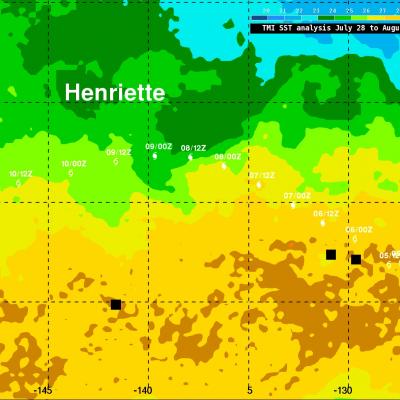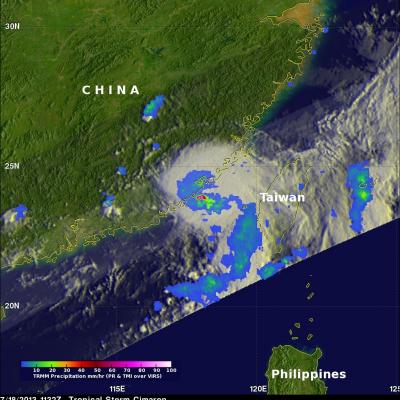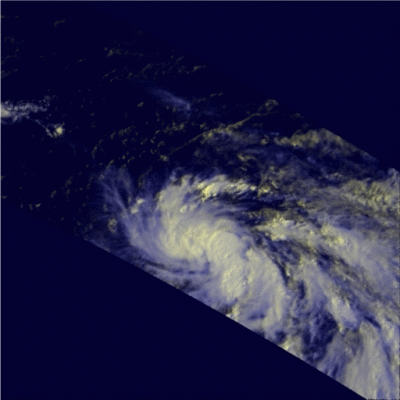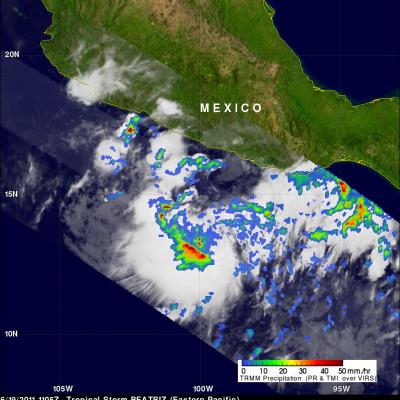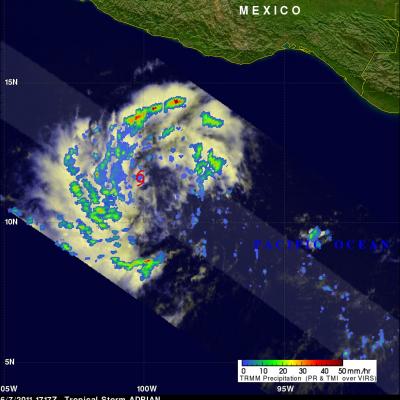Hurricane Henriette To Move Over Colder Waters
Hurricane Henriette, located a little over 1,770km (~1100 miles) east of Hawaii, was still intense with winds of 90kts (~103.5 mph) this morning. The National Hurricane Center (NHC) predicts that Henriette will weaken tomorrow as it moves over cooler waters and encounters west-southwesterly wind shear. Henriette's track was overlaid on a Sea Surface Temperature (SST) analysis that was derived from observations by the TRMM Microwave Imager (TMI) radiometer. Sea Surface temperatures have to be warmer than 26 °C for tropical cyclones to survive and this analysis indicates that hurricane Henriette


